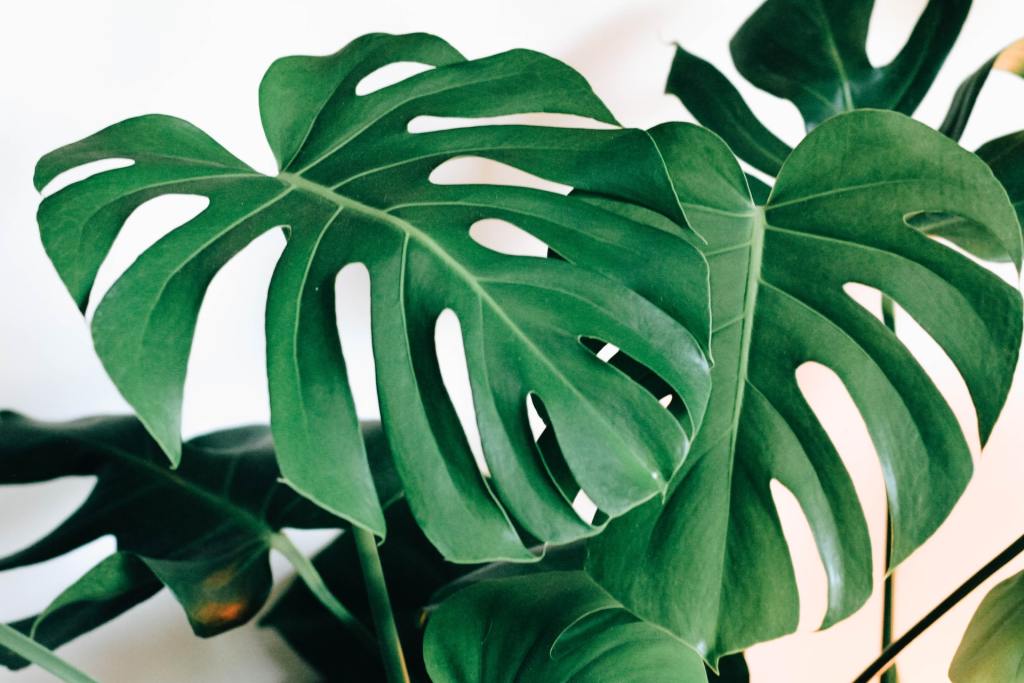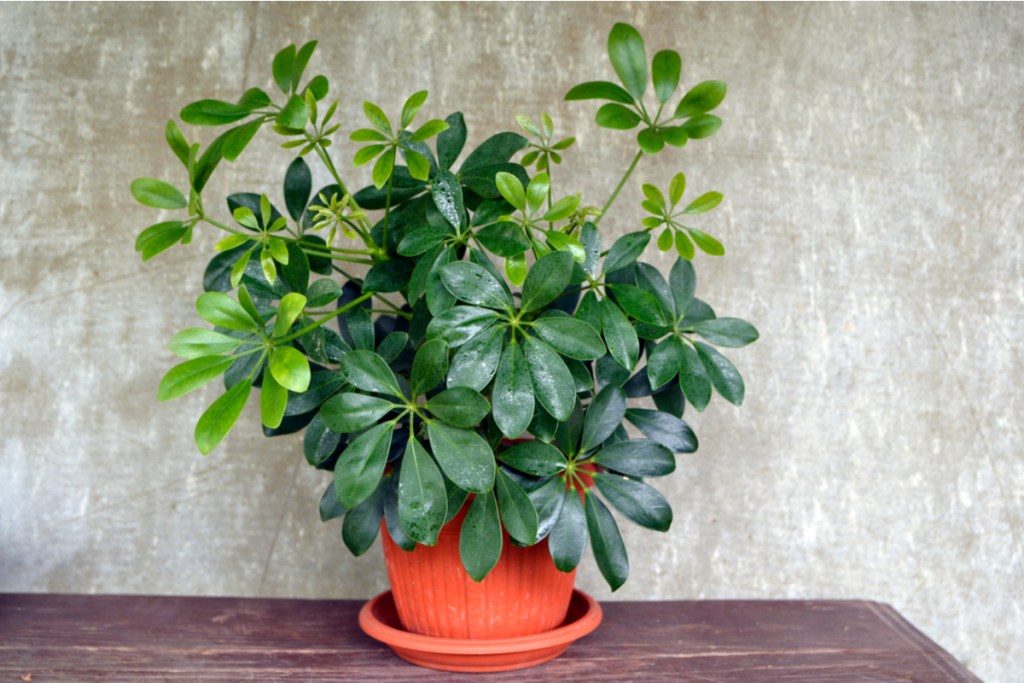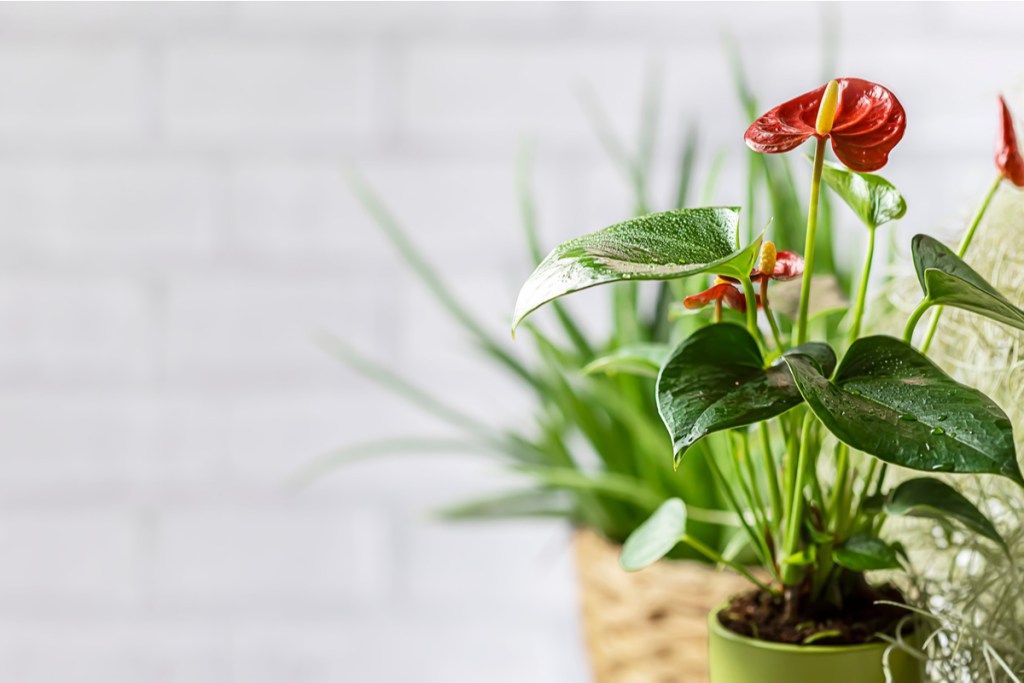Want to escape the heat while bringing summer indoors? Populate your home with lush tropical plants! Since most of them grow beneath tree canopies out in the wild, tropical plants thrive with cool room temperatures and bright indirect light. They’re also easy to maintain, as long as you keep up with watering and feeding them throughout the growing season. From the ubiquitous monstera deliciosa to the striking bird of paradise, bring the following tropical houseplants into your house or apartment for relaxing summer vibes all year round.

Monstera deliciosa
The monstera deliciosa is more or less synonymous with green tropical prints. Even beyond wallpaper and shirts, you can have a monstera in your home as well! Also known as the Swiss cheese plant, this species is beloved for its fenestration, which is when holes develop in its large, heart-shaped leaves. The prolific monstera can effortlessly thrive indoors with care, appreciating consistent watering and bright indirect light. Want even more growth? Give it diluted liquid fertilizer on a weekly or biweekly basis during the growing season. As it grows, you may want to support it with a moss pole to prevent its leaves from becoming unruly.
Dwarf banana plant
You probably won’t be able to yield bananas indoors, but you can certainly keep a banana plant inside your home! For a pick that’s reasonably sized, go with a dwarf banana plant, which is often sold indoors at nurseries. Featuring paddle-shaped leaves that emerge from a thick central stalk, this plant appreciates moist soil and full sun to produce its leathery, bright green leaves. During the growing season, feed it once a month with diluted fertilizer. With the dwarf banana plant, you may occasionally notice brown tips. With browning foliage, the culprit is usually one of three things: dry air, unfiltered water, or too much direct sunlight. Try increasing the humidity, using filtered water, and placing your plant in a shady spot to troubleshoot this issue.

Dwarf umbrella plant
Bring whimsy into your home with a dwarf umbrella tree, or the schefflera arboricola, which features stems connected to spokes with five to nine leaves (which are usually green but can have a yellow or cream variegation). Care for the dwarf umbrella tree isn’t too difficult as long as you give it bright indirect light and don’t overwater it. This plant is drought tolerant, so only water it when the top layer of soil feels dry. Brown spots and dropping foliage may indicate root rot from overwatering.
Bird of paradise
The bird of paradise, or strelitzia plant, features large, spear-shaped leaves that will infuse your space with tropical vibes. While commonly an outdoor plant, the bird of paradise can flourish at room temperature, too! The foliage emerges from long leaf stalks that elegantly fan out. Make sure the soil remains evenly moist and water it thoroughly when the top inch dries out. During the growing season, feed your bird of paradise twice a month. One of the drawbacks of keeping it as a houseplant is that it seldom yields its striking yellow-orange blooms indoors, unless you’re able to give it bright direct light at least three hours a day.
Parlor palm
There’s nothing like a palm tree to evoke summer’s breezy vibe! This plant features woody stems with arching pinnate leaves to give your home a beachy feel. When you grow it in a container, it’ll only reach three feet tall, so no worries about it taking over your space. This plant appreciates bright indirect light and warm room temperatures between 65 and 75 degrees Fahrenheit. While it can tolerate drought, it’ll look its best when given extra humidity, so leave it near a tray of pebbles with water or place it by a humidifier. Ample humidity will not only keep your plant looking lush, but it’ll also prevent any unwanted spider mite infestations!

Anthurium
There’s nothing like a splash of color to channel summer! The anthurium is well-loved for its bright, heart-shaped leaves that look like flowers and come in bold colors such as red, white, purple, and pink. For bold leaves, this plant appreciates bright indirect light and adequate humidity. It needs soil that’s well draining and holds water, so a combination of potting mix and orchid bark or perlite should suffice. Water when the top half of your plant feels dry to the touch. The anthurium plant isn’t a heavy feeder, so you only need to fertilize it once a month during the spring and summer.
Even if you don’t have any plans to head to the beach, make the inside of your home a lush summer paradise with tropical houseplants. From statement monstera to gorgeous anthurium, give your home a touch of nature without even stepping outside. With adequate lighting, smart watering, and occasional fertilizing, your home can feel like a tropical vacation all year round.
Editors' Recommendations
- Stunning Monstera plants that you should add to your indoor plant collection
- Beyond basil and cilantro, add these unique plants to your indoor herb garden
- 5 easy-care spider plant varieties perfect for any home garden
- Easy hoya plants to add to your indoor plant collection
- Are these common houseplants safe for your cat? Read this guide to find out the scoop




